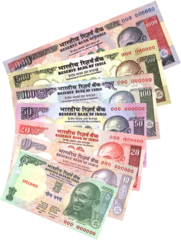Indian Economy Basics – REPO, CRR, Fiscal Deficit etc
If economic terms like REPO and CRR appear Greek to you, this article may help. Knowledge about the fundamentals of economics and banking can help you understand many of the government policies better.
What is REPO rate?
REPO means Re Purchase Option – the rate by which RBI gives loans to other banks. Present rate is 7.75%. (Jan 29,2013)
What is Reverse REPO rate?
RBI at times borrows from banks at a rate lower than REPO rate, and that rate is known as Reverse REPO rate (now 6.75%).
What is Bank rate?
Bank rate is a higher rate, (1% higher than REPO rate) charged by RBI when it gives loans to commercial banks. Present bank rate is 8.75%.
What is CRR?
CRR corresponds to Cash Reserve Ratio. It corresponds to the percentage of cash each bank have to keep as cash reserve with RBI (in their current accounts) corresponding to the deposits they have. Present CRR is 4%.
What is Fiscal Deficit?
The fiscal deficit is the difference between the government’s total expenditure and its total receipts (excluding borrowing).
What is Current Account Deficit (CAD)?
Current account deficit in simple terms is dollars flowing in minus dollars flowing out.
Impact of High REPO and CRR
High REPO and CRR chocks the industrial sectors and the loans becomes costly. RBI keeps these rates high inorder to check inflation, but the negative impact will be on growth rate.
Why did RBI lower the REPO and CRR?
The fear of inflation was the reason why RBI didn’t lower REPO rate for last 9 months. But now since the inflation rates seem to have eased a little bit by various scales like CPI inflation, WPI inflation and core inflation, Reserve Bank of India has attempted to lower the REPO and CRR.
